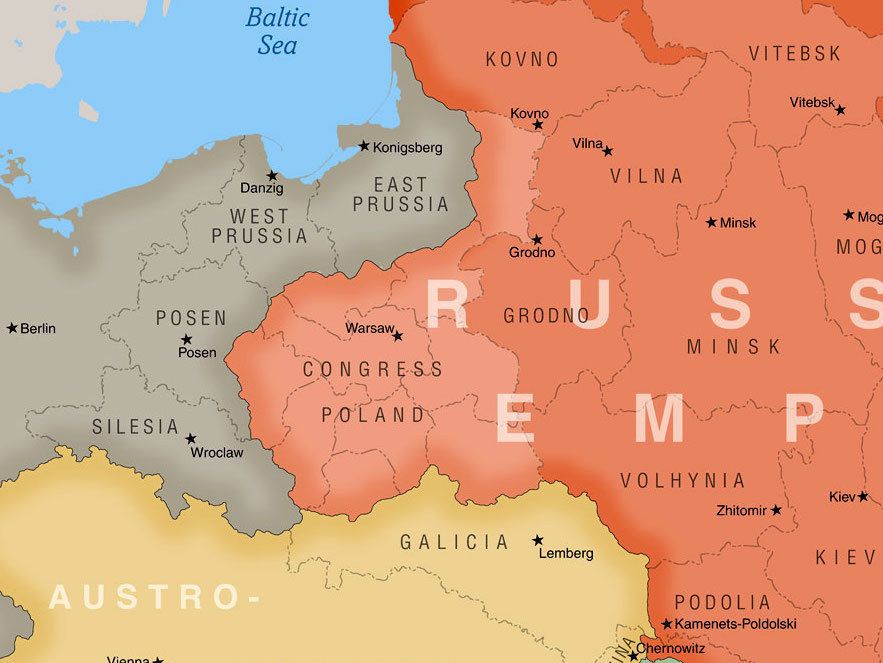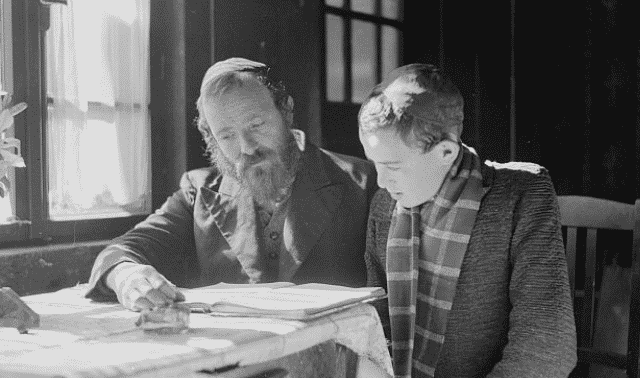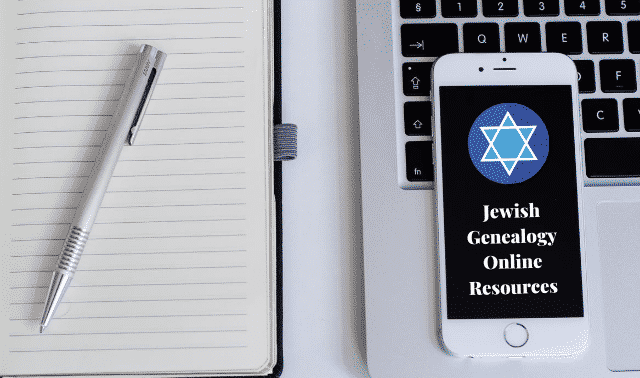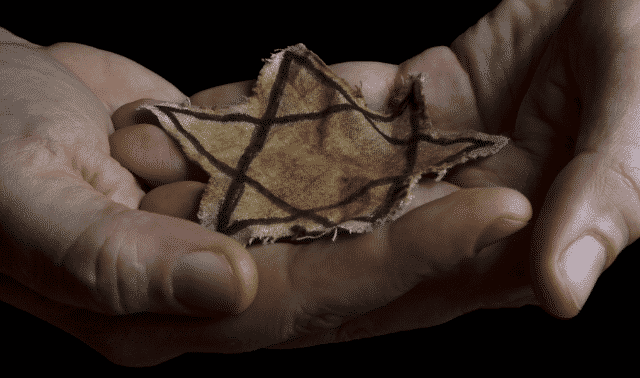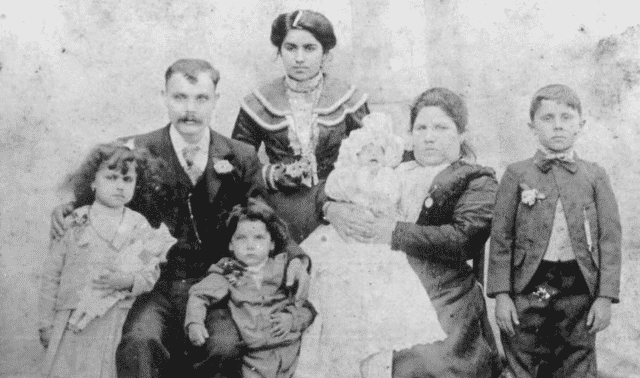Sign up for the Family Tree Newsletter! Plus, you’ll receive our 10 Essential Genealogy Research Forms PDF as a special thank you.
Get Your Free Genealogy Forms
"*" indicates required fields

Many Americans with Ashkenazi Jewish genealogy have a mental picture of their Eastern European ancestors shaped more by “Fiddler on the Roof” than by any reliable family information. But the musical’s depiction of Jewish life in Eastern Europe oversimplifies the hardships European Jews faced in the insular small towns they had lived in since the late Middle Ages.
Jews were permitted to live and work in greater Poland (unlike in the Rhine Valley region from which their ancestors had been expelled), but only in certain places and at certain jobs. In the small market towns they formed called shtetls (or shtetlach in the Yiddish plural), they enjoyed a favored economic relationship as middlemen in the distribution of goods from feudal estates. Except for their traditions, as Tevye the milkman famously lamented, their lives were as shaky as a fiddler standing on the roof.
In genealogy, we focus on finding your ancestor’s shtetl because correctly identifying your ancestral town is one of the key pieces of information (along with surname) to finding specific evidence of your ancestors’ lives in contemporary record books. The shtetl also serves as a locus for general historical knowledge about your ancestors’ economic and social climate.
With so much genealogical information now available online, you’ll need a hand in determining which resources to use first and how to frame your research project. Let’s dive into how to find and use those resources—not just to identify your Ashkenazi ancestors in Eastern Europe, but also to understand the context of their lives.
Learning the basics of Ashkenazi Jewish genealogy
Jewish genealogy extends back to Biblical times. But the focus of Ashkenazi genealogical research is in Central and Eastern Europe from the 18th through 20th centuries, a realistic horizon for vital records availability. Beginning as a small tribe of southern European Jews who moved north in the early Middle Ages, the Ashkenazi produced large families as well as an enduring cultural tradition. Today, Ashkenazi Jews account for 75 percent of worldwide Jewry—despite the decimation of the European Jewish population during the Holocaust.
Until genealogical interest began to boom over the past 30 years, Ashkenazi Jewish ancestry was all but impossible to trace. Researchers had no inventory of available records, nor any means to access them. But since then, pioneering researchers, volunteer projects, and the nonprofit portal for Jewish genealogy JewishGen have brought millions of records from all areas of Ashkenazi Jewish settlement online. In particular, the Jewish Records Indexing-Poland (JRI-P) has indexed millions of records of Polish Jews from two major sources: microfilms produced by the Church of Jesus Christ of Latter-day Saints (LDS), and historical holdings of the Polish State Archives (PSA).

While not all records from these microfilms and repositories have been indexed, the trove of searchable data made accessible through JewishGen gives amateur genealogy researchers today an excellent chance of discovering at least some evidence of their family roots in Eastern Europe. Between its own resources and those of its partner organizations, JewishGen offers a vast collection of databases, communities and collaborative research projects.
You won’t rely solely on JewishGen resources to research your Ashkenazi Jewish roots. However, it is the place to begin (and return to repeatedly) as you work to identify ancestors and contextualize your Jewish family history in Eastern Europe.
How to find your shtetl
For some, locating the shtetl is easy because a town name has been passed down throughout the generations or has a consistent spelling. But those researching a lesser-known town or (especially) a common surname have a more difficult challenge.
Where to begin? First, decide the individual or family group you want to research, preferably the first of your ancestors to come to North America from Europe. You can repeat the process for other branches of your family tree, but you’ll want to focus on one family at a time.
Collect family lore (if any) about the person or family. Even if multiple generations have passed since anyone would have firsthand knowledge of a family or immigration story, descendants who heard the family stories from their grandparents or great-grandparents might still be alive. Interview anyone in your family who has a connection to the family’s history, and study any letters or photographs.
Next, search for records of your immigrant ancestors in the New World, including census returns, immigration lists and cemetery records. Records, such as ship manifests, may directly identify a town of origin. Likewise, cemetery records may mention a burial society or benevolent association linked to the ancestral town. I found my Ratner family’s previous place of residence on the ship manifest of their 1891 voyage from Hamburg to Liverpool, en route to New York. The record revealed they actually came from a small Russian town, not the nearby, more famous city mentioned in family lore.
At a minimum, US census records will give your ancestor’s birth country: Russia, Prussia, Poland, Austria or another. From this more general information, you already know something about your family’s cultural heritage.
Keep in mind that the town name you identify in a family story or even an official record may not be correct, especially if it was a small, less well-known location. The town’s name may have been changed in translation from Yiddish to English or in retelling from person to person, and it will likely have multiple spellings.

Once you have an idea of your town’s name, turn to the Communities Database at JewishGen. Also called the Town Finder, the Communities Database combines a gazetteer of town names and geographical coordinates with a comprehensive database of 6,000 historical Jewish communities. Type in your town name, using your best guess at how it was spelled during the historical period. If the search returns more than one matching town, you can narrow your results by comparing the summary information to what you already know about your family’s history.
When I searched for an ancestral town, the names of two possible towns came up. Was it Rezhitsa in Latvia, or Rechytsa in Belarus? The town name had been misspelled in records, so I couldn’t be sure of the precise spelling. But the Latvian town (now called Rezekne) seemed to fit since I found the family name on a residence list there.
From the Communities Database search results, click through to a locality page. There, you’ll find links to all available JewishGen resources for the town, beginning with a map and a list of other Jewish communities within a 30-mile radius. This could help if your ancestor came from a smaller village outside a more prominent town.

Some JewishGen locality pages link to other databases within the site. For example, JOWBR (the JewishGen Online Worldwide Burial Registry) links to cemetery records that benevolent societies have connected to shtetl towns. Others take you to rich repositories of knowledge about the town, including memorial books and collections of town history and memoirs.
Don’t forget to check out the locality page’s links and references to non-JewishGen resources, which may offer new information. The Your Town function at JRI-Poland, for example, provides a list of LDS microfilms for the town, which could yield family information not yet in databases. JewishGen locality pages also link to Virtual Shtetl, a service of the Polen Museum in Warsaw that provides extensive town collections (only a few of which have been translated to English).
Other town-based resources on JewishGen include the Special Interest Groups (SIG), which contains information and expertise about each town’s wider region. Likewise, the Family Finder contains a list of other researchers interested in the town.
Researching surnames
Having narrowed your target area to a town (or at least a province or country), you’re ready to search JewishGen for your ancestor’s records by surname. This is where you will access the JRI-Poland database of 5 million birth, marriage and death records, which covers all the regions of greater Poland. You’ll also search thousands of smaller data collections compiled by JewishGen, which include vital records for areas not covered by JRI-P as well as content specific to the Holocaust, immigration and other subjects. In aggregate, these additional JewishGen contents account for some 18 million records.
Until recently, you needed to search separate databases for each modern-day country where your ancestor may have originated. But you can now search any or all of the country databases from the Unified Search page. Simply enter a surname to perform a global search.

The search results page displays the number of hits in each of JewishGen’s databases. You’ll find many of the same databases as you did when using the Communities Database. (You can also search JewishGen by a combination of name and town to get the most targeted results.)
If your town was in an area of greater Poland, you’ll see JRI-Poland listed as one of the databases, with matching records for your surname broken out by province or sub-region. Click through to a region to see a list of matching vital records, organized by town within the region. Scroll through these pages to your town of interest to review a table of records showing surname, given name, year, record type, metric book citation, gender, parent names and more.

Sometimes you may find other details, such as an occupation or house number. I thought my Ringel ancestor in the town of Rzeszów, Galicia, might have been a tailor, since his son and grandson were in the garment business in Berlin. But vital records on JewishGen showed me he was actually a kosher butcher.
If you’re lucky, the table of records for your surname and town will contain your ancestor, whom you can identify by his given name and possible life-event date. This is your key to discovering names and birth/death dates of your ancestor’s parents, siblings and extended family members. The true payoff comes if the record also has an LDS microfilm number—or even a link to view and download an image of the metrical book.
Many of your searches will come up blank. But other times, you’ll get lucky and one of your ancestors will connect to a known body of information. My Kaufler family from Kraków was well documented in a research project that generated family trees for the 70,000 individuals indexed in Kraków birth and census records. I typed in the surname, and the site returned an automated hierarchical family tree showing not only my ancestor, but also three more generations dating back to 1755.
In a similar vein, you might meet a distant relative through JG Family Finder who has information that was unknown to you. The Family Tree of the Jewish People, another JewishGen feature, is a collaborative family tree that may include data about your ancestors. However, be aware that information in collaborative trees may be speculative or poorly sourced, so treat it with care.
Be alert for common pitfalls. Your ancestor might have a common name, or his name may have inconsistent spelling. As a result, don’t automatically assume that a hit is your ancestor. You’ll need more than the right surname and town name to make certain a record is really for your relative. In addition, the first town name you find may not be the family’s original location. Rather, records might point to other towns and (hopefully) earlier generations.
Look out for unusual name situations. For example, there are several reasons that children from a shtetl may have carried their mother’s (rather than their father’s) surname. In Galicia, many Jews who married in the synagogue resisted the government’s requirements to also obtain a civil marriage license. As a result, officials considered their children to be illegitimate and thus gave them the mother’s surname.
In other circumstances, children may have been given their mother’s name as a matter of yichus, or genealogical pride—if she came from a famous rabbinical family, for example.
Putting Ashkenazi Jewish genealogy records in context
You never know where a breakthrough will come from. As you discover and document your family information, you will piece facts together into a bigger narrative that places your family story in historical context. Your goal is to situate family members in the larger sweep of history—their political status in imperial Europe, their way of life in the shtetl, their migration story of dislocation and resettlement, and their experience of loss and survival during the Holocaust.
To elaborate your family’s story, you will need to consider the facts in light of several common frameworks.
Tradition
For hundreds of years, life in the shtetl was based on tradition—prescribed religious practices, the spoken Yiddish language, and communal activities. Marriages were arranged, and (given the high rate of child mortality) shtetl Jews had large families. The Jewish community looked out for its own. In the rigid economic structure, Jews typically filled two roles in society—by making things as artisans or tradesmen, or by selling things as merchants or dealers.
Modernity
By the 19th century, Jewish communities throughout Eastern Europe had collided with the modernizing world through technology and communications. More progressive citizenship laws in certain regions gave Jews access to the economic mainstream (at the expense of their cultural isolation). Young, well-educated Jews settled in Western capitals and made an impact in business, the arts and science. Meanwhile, a non-religious Jewish identity arose around Zionism and the idea of a Jewish homeland. For those individuals, socialist political ideals held strong appeal.
Migration
Widespread poverty, military conscription and a wave of anti-Jewish persecution were among the factors that set off a period of mass emigration throughout Jewish regions. About three million Jews left the Russian Pale between 1881 and 1914. Many left for America, but not all migration was transatlantic. Migrants also flowed to cities across Central and Western Europe, where many of them thrived as merchants.
Holocaust
Anti-Semitism, a theme in Jewish life since the beginning of the Christian era, reached its zenith during the Nazi’s “Final Solution,” in which more than 6 million European Jews perished. Those that saw the warning signs and could leave did so, but even those with resources found few places in the world that would take them. My mother, for example, escaped Germany in 1938, but many of her extended family members did not. I found testimony about the fate of two of her aunts and a cousin in the Yad Vashem Names database. Another relative, her great-aunt, was deported from Berlin and murdered at Treblinka. For those living in occupied shtetls, life became a spiral of confiscation, forced labor, ghettoization and extermination.
Diaspora
Jewish life did not die in Europe in the 1940s, though Ashkenazi communities changed forever. Earlier waves of migration created significant Jewish communities in North and South America, in English Commonwealth nations, and in Israel, the national Jewish homeland established in 1948.
Digging deeper into your Ashkenazi Jewish ancestors’ past
You can continue learning the history of your town—both about its 19th-century heyday and its decimation in the Holocaust—through memorial Yizkor books and KehilaLink pages. Yizkor books are collections of writings about major Jewish communities, originally compiled in Yiddish by Holocaust survivors and partially translated and supplemented by town historians. KehilaLink pages are similar collections, but are only online and cover more communities.
Your ancestor and his family may have been mentioned in one of the memorials. But even if not, these sources will reveal details of the economic and social life of the shtetl, as well as introduce the town’s well-known historical figures and memorable characters.
Special interest groups are also essential repositories of knowledge and content specific to major regions. Gesher Galicia and LitvakSIG are two of the best developed, with their own collections, research projects and services. There’s a regional SIG covering every Jewish community. Through SIGs, you can subscribe to discussion lists, access content collections, and tap community knowledge using features such as ViewMate, which crowd-sources document translations.
Researching subjects like immigration and the Holocaust will likely lead you to outside resources for finding family records. You can start your research using the JewishGen’s InfoFile feature, which compiles links and how-to articles by subject. Besides immigration, InfoFile has collections on cemeteries, genetics, the Holocaust, geographic regions and more.
Commercial genealogy tools like Ancestry and MyHeritage are also great resources for immigration records, among their other features for Jewish genealogy. Both companies enjoy a close relationship with JewishGen; MyHeritage sponsors JewishGen’s Family Tree of the Jewish People, and Ancestry offers non-exclusive access to many (but not all) of JewishGen databases.

JewishGen has its own Holocaust database that contains more than 2 million records compiled from Nazi documentation and other sources. But the most comprehensive database of Holocaust victims is the Yad Vashem Central Database of Shoah Victims’ Names, known simply as the Names Database. JewishGen partners with Yad Vashem to solicit new testimonies. The collections of the U.S. Holocaust Memorial Museum, including concentration camp records and captured Nazi files, are another important source.
Having identified and located one relative or family in their ancestral town, repeat the same steps for your other Ashkenazi family branches. New facts and insights will keep on coming. Just while reviewing facts for this article, I discovered a divorce in my ancestor’s Ringel family in 1870; the married name of my grandfather’s sister (as well as her fate in the Holocaust); and my great-grandmother’s nickname (which matched my mother’s middle name).
You may find that the more that you learn, the more curious you become. And in time, if you really catch the bug, you’ll soon have your own shtetl story to tell—one with your family members, not Tevye the milkman, in the starring role.
A version of this article appeared in the May/June 2019 issue of Family Tree Magazine.

